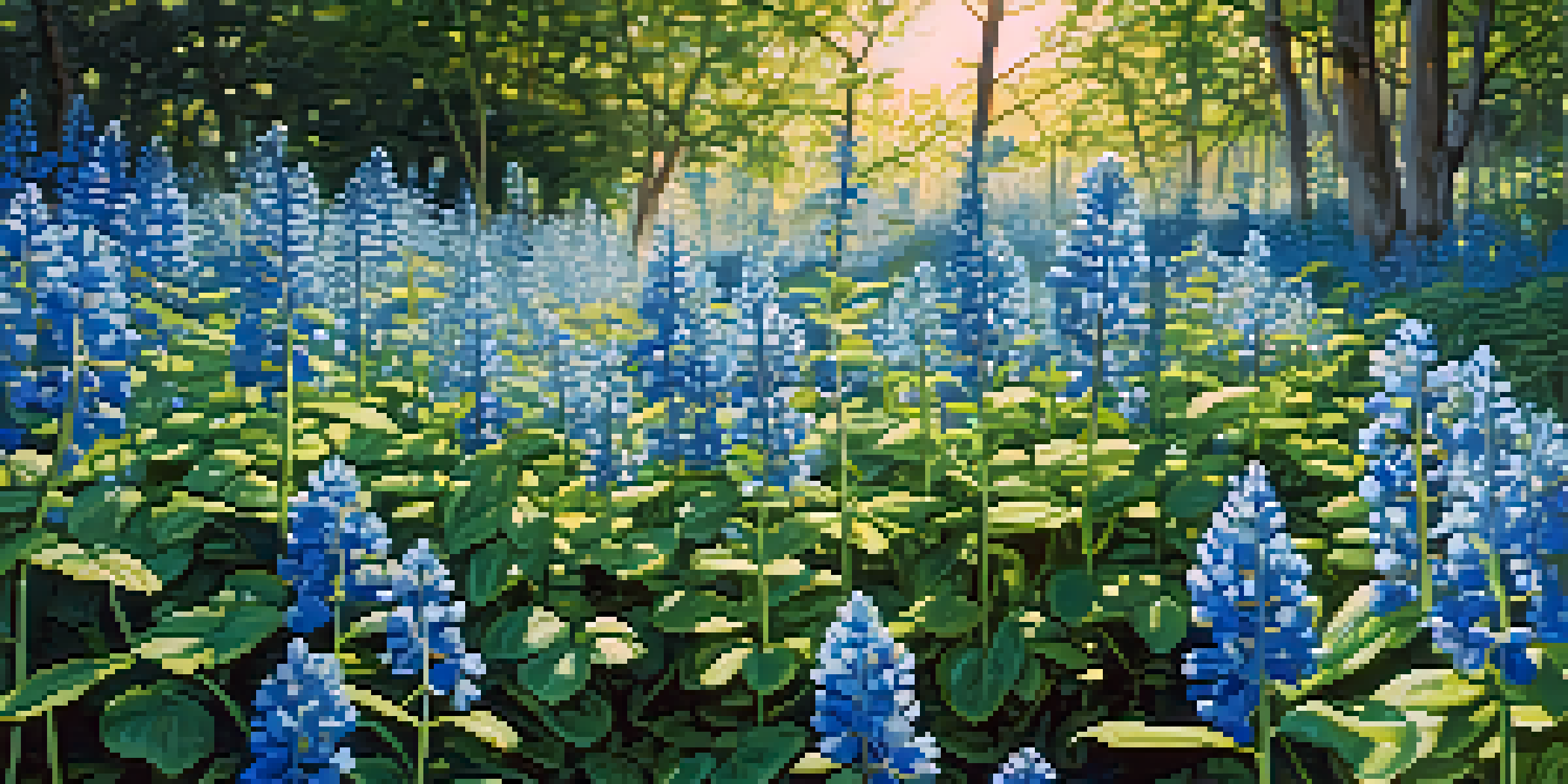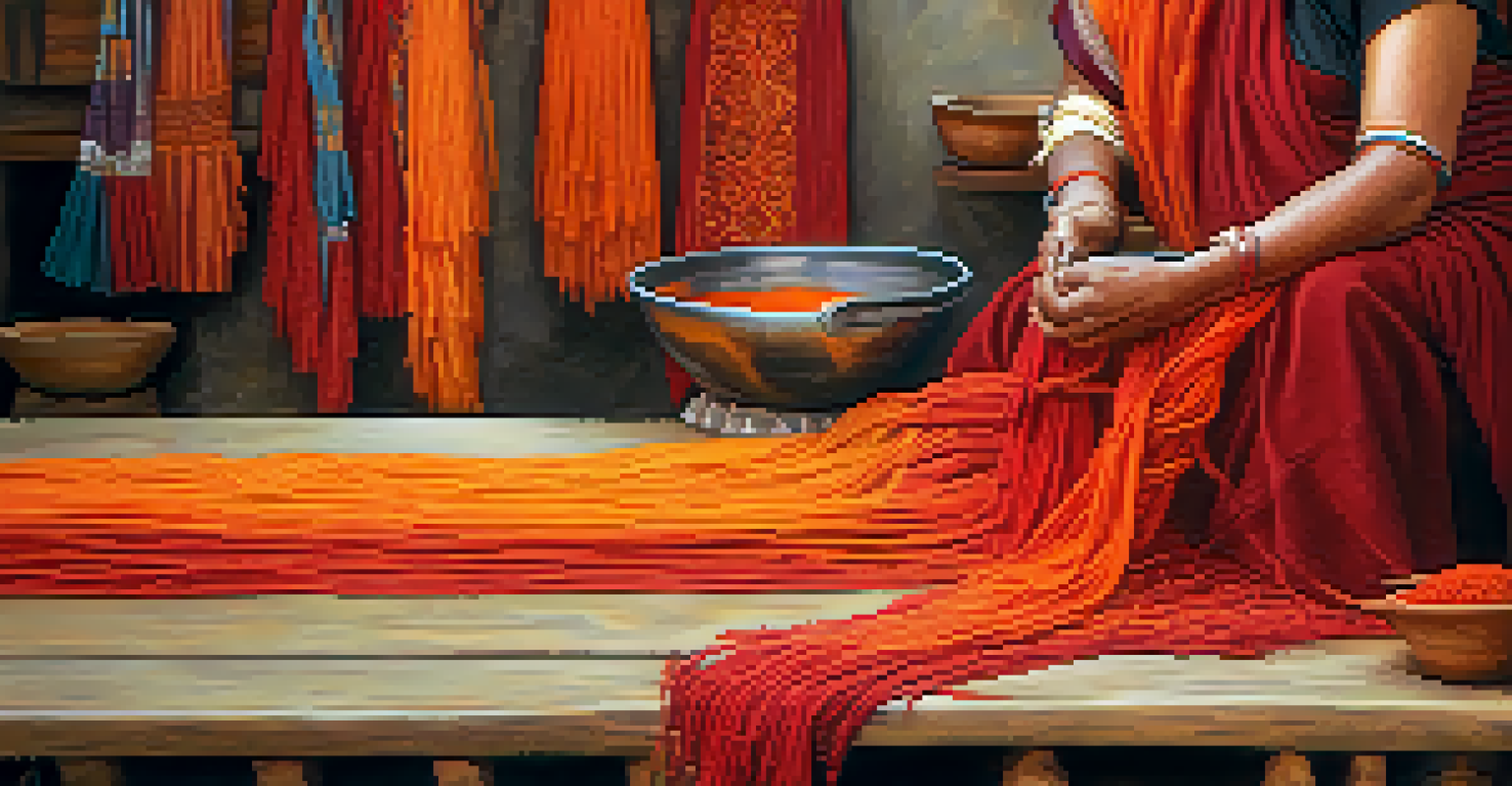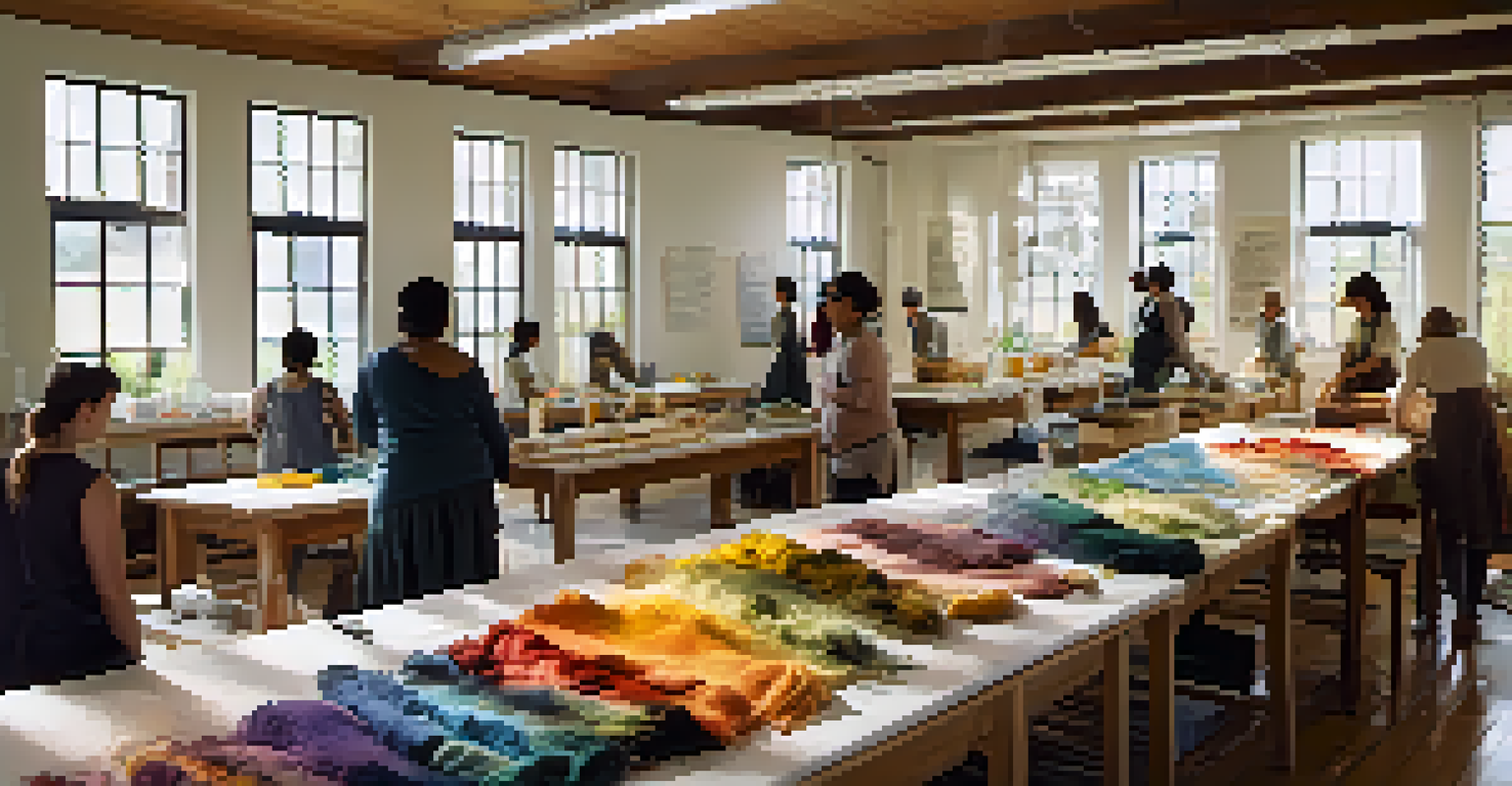Dye Plants: Traditional Methods and Cultural Heritage

The Significance of Dye Plants in Cultural Heritage
Dye plants have played an essential role in various cultures around the world, serving not just practical purposes but also symbolic ones. These plants, often rooted in local traditions, provide colors that carry deep meanings associated with identity, status, and artistry. For instance, indigo has been revered in many cultures, from ancient Egypt to modern Japan, for its vibrant hue and cultural significance.
Colors are the smiles of nature.
In many indigenous communities, the use of natural dyes is intertwined with rituals and celebrations, reflecting a deep connection to the land and its resources. This relationship not only fosters a sense of community but also preserves knowledge passed down through generations. In this way, dye plants become a living testament to cultural identity and heritage.
As we delve into the world of dye plants, we uncover stories of resilience and creativity, emphasizing the importance of preserving these traditions in an ever-globalizing world. By understanding their significance, we can appreciate the artistry that goes into every dyed fabric, highlighting the blend of nature and culture.
Common Dye Plants and Their Unique Colors
Various dye plants are celebrated for the unique colors they yield, each with its own story and application. For example, madder root produces a stunning range of reds and oranges, historically used in textiles across Europe and Asia. Similarly, turmeric, often found in our kitchens, offers a bright yellow dye that has been cherished in many cultures, from Indian sarees to traditional Buddhist robes.

The vibrant colors from these plants are not only visually striking but also carry historical and cultural significance. In some regions, specific colors indicate social status or are reserved for particular occasions, enhancing the understanding of their role in society. This rich palette of colors tells a larger story about the relationship between people and their environment.
Cultural Heritage of Dye Plants
Dye plants serve as symbols of identity and artistry, reflecting deep connections to cultural traditions and community.
Moreover, the colors derived from these plants often change depending on the mordant used, which is a substance that helps fix the dye to the fabric. This variability allows artisans to experiment and create unique shades, further enriching the textile tradition and showcasing their creativity.
Traditional Dyeing Techniques Across Cultures
Dyeing techniques vary widely, reflecting the cultural values and resources of different regions. For instance, the Japanese practice of shibori involves folding, twisting, or bunching fabric to create intricate patterns before dyeing it with indigo. This technique not only produces stunning designs but also symbolizes harmony and balance in Japanese culture.
The use of natural dyes is a bridge between the past and the present, connecting us to our cultural roots.
In contrast, the West African technique known as adire uses resist dyeing methods, where certain areas of the fabric are prevented from absorbing dye to create beautiful patterns. This vibrant textile art form has deep roots in the region and serves as an expression of identity and community pride.
Exploring these traditional methods reveals how cultures adapt their dyeing practices to their environment and available resources. These techniques, passed down through generations, embody the ingenuity and artistry of the people who create them, emphasizing the importance of preserving such knowledge.
Sustainable Practices in Natural Dyeing
As the world increasingly turns to sustainable practices, natural dyeing methods are gaining traction. Utilizing plants for dye not only reduces chemical waste but also promotes biodiversity by encouraging the cultivation of native species. By choosing natural dyes, artisans contribute to a more eco-friendly textile industry.
Moreover, the resurgence of interest in natural dyes has led to the revival of traditional practices that were in danger of being lost. Artisans and designers are now experimenting with these methods, blending them with modern techniques to create stunning, sustainable fabrics. This fusion not only preserves cultural heritage but also introduces new audiences to the beauty of natural dyes.
Sustainability in Dyeing Practices
Natural dyeing methods promote eco-friendly practices while reviving traditional techniques that highlight cultural heritage.
Sustainability in dyeing is about more than just the materials; it extends to the entire production process. By supporting local farmers and using eco-friendly practices, we can ensure that the art of natural dyeing thrives for generations to come, enriching both our environment and cultural heritage.
Challenges Facing Traditional Dyeing Practices
Despite their beauty and cultural significance, traditional dyeing practices face numerous challenges today. The rise of synthetic dyes, which are cheaper and more accessible, has led to a decline in the use of natural dyes. This shift threatens to overshadow centuries of craftsmanship, as fewer artisans pass down their knowledge and skills.
Additionally, environmental changes pose a significant threat to the availability of dye plants. Climate change, pollution, and urbanization can impact the growth of these plants, making it difficult for artisans to source their materials. As specific plants become harder to find, the continuity of traditional dyeing practices is jeopardized.
However, there is hope as many communities are working towards revitalizing these practices through education and awareness. By promoting the benefits of natural dyeing and supporting local artisans, we can help ensure that these valuable traditions are preserved and appreciated in the modern world.
The Role of Education in Preserving Dye Plant Knowledge
Education plays a crucial role in preserving the knowledge surrounding dye plants and traditional dyeing methods. Workshops and classes that teach these techniques not only empower individuals but also foster a sense of community among participants. By sharing skills and stories, these educational initiatives help keep the art of natural dyeing alive.
Furthermore, institutions and organizations are increasingly recognizing the importance of documenting traditional practices. By archiving techniques and interviewing artisans, they create resources that can be used for future generations. This effort ensures that the rich history of dye plants and their cultural significance continues to be celebrated.
Challenges to Traditional Techniques
Traditional dyeing practices face threats from synthetic dyes and environmental changes, endangering centuries of craftsmanship.
Incorporating natural dyeing into school curriculums can also inspire a new generation to appreciate and engage with these practices. By nurturing an understanding of textile arts from a young age, we can cultivate a love for traditional crafts and their role in cultural heritage.
The Future of Dye Plants and Cultural Heritage
The future of dye plants and cultural heritage is intertwined with our collective efforts to preserve these traditions. As more consumers seek sustainable and ethically sourced products, natural dyeing is poised for a resurgence. This shift in consumer behavior can encourage artisans to continue their practices and inspire new generations to explore the world of natural dyes.
Additionally, the rise of social media plays a significant role in promoting awareness of traditional techniques. Artisans can showcase their work on platforms like Instagram and TikTok, reaching a broader audience and fostering appreciation for their craft. This visibility not only helps sustain their livelihoods but also educates the public about the significance of dye plants.

Ultimately, the preservation of dye plants and their associated cultural heritage relies on collaboration between artisans, consumers, and educators. By valuing and supporting these practices, we can ensure that this beautiful art form continues to thrive, enriching both our world and our understanding of cultural diversity.